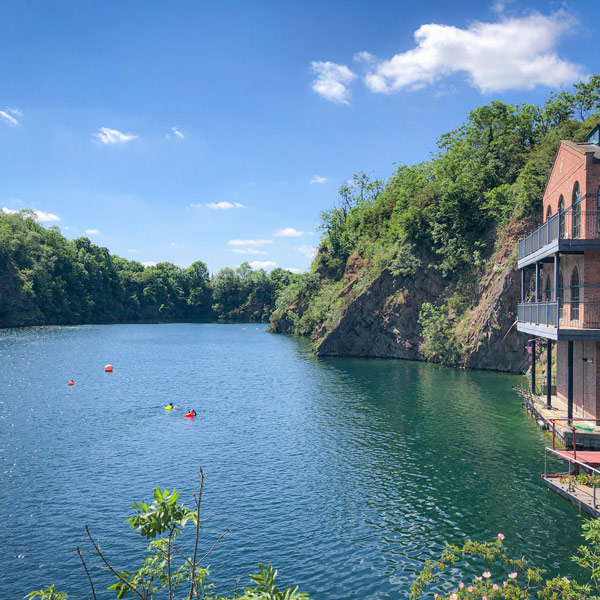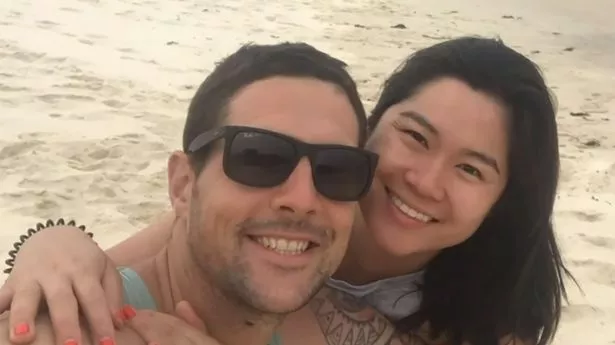Dive Tragedy at Stoney Cove: Remembering Richard Stansfield and Roger Clark


| Incident Location | Diver Full Name |
|---|---|
| England, Leicestershire, Stoney Cove | Richard Stansfield, Roger Clark |
Stoney Cove
Situated between Stoney Stanton and Broughton Ashley, lies Stoney Cove, known as the National Diving Center of England. This site attracts around 60,000 divers annually, but tragically, it has witnessed a grim pattern – at least one diver drowns each year since its opening in 1978.
In 2003, the center faced a fine of £7,500 and additional costs exceeding £40,000 following the death of an amateur diver. Despite these incidents, the allure of Stoney Cove’s frigid waters continues to attract divers of all levels. Among these divers were Richard Stansfield and Roger Clark, whose stories ended in tragedy.
While England is renowned for its rainy climate, historic landmarks like Stonehenge, and vibrant music scene, its affinity for scuba diving is a lesser-known aspect. The United Kingdom stands as a cold water diving hub globally, boasting vast coastlines and numerous inland water bodies.
Interestingly, despite being an island nation, the UK’s diving community often turns to inland diving. Lakes, quarries, and locks provide diverse underwater environments. Among these, Stoney Cove claims the title of the UK’s most popular inland diving center. Positioned in the village of Stoney Stanton, this diving haven shares space with two other diving sites.
Nestled in Leicestershire, central England, Stoney Cove’s history stretches back to the early 19th century when it served as a granite quarry for road repairs. By 1850, a railway facilitated the transportation of granite from pit bottom to top. The quarrying ceased in 1958, allowing spring water to flood the area. Diving activities commenced in the 1960s, initially catering to commercial divers training for North Sea oil fields. As recreational scuba diving gained popularity, Stoney Cove transformed into an underwater adventure park.
Underwater Treasures and Hazards
Stoney Cove’s attractions are plentiful, including sunken helicopters, buses, boats, shipwrecks, and even a submarine. The diverse fish population, including perch, roach, pike, and crayfish, further enriches the experience. The quarry covers 12.5 acres and features three main levels: a shallow six-meter training area, a 36-meter advanced training sump, and the main body with two 22-meter deep sections. The deeper areas demand advanced skills due to colder temperatures and reduced visibility.
The deepest section, known as “the pit,” descends to 115 feet (35 meters). Notable in this area is the Deep Hydro box, a metal structure designed for underwater tasks. However, exploration within the box demands caution due to depth, visibility risks, and enclosed spaces. Navigating Stoney Cove’s features can be challenging, particularly when visibility is compromised. Planning routes with multiple waypoints is advisable to ensure safe exploration.
Nigel Craig, a seasoned diver, met his untimely end on July 24, 2016. With two decades of diving experience, Nigel’s passion for diving was extinguished in a tragic turn of events. Nigel’s journey with diving began during his childhood, and he undertook PADI training, eventually becoming a PADI Master Instructor in 2013. Over the years, he certified hundreds of students, including Richard Stansfield.
Richard, an electrician from Northampton, was an exceptional individual known for his meticulous work ethic and innovative problem-solving skills. Beyond his professional life, he harbored a deep passion for diving. His exploration of Stoney Cove’s depths was a regular weekend pursuit. Richard held an Advanced Open Water certification, granting him access to more challenging sections of the dive site.
Fatal Dive: A Tragic Sequence of Events
On July 24, 2016, tragedy struck during a PADI deep specialty course dive. The course aimed to deepen divers’ understanding of pressure effects and safety protocols at depth. Richard, accompanied by Dive Master Carol Tokarchek and Instructor Nigel, embarked on the dive. Nigel, with decades of experience, led the dive as an instructor. The team reached a descent line marking the hydrobox, an underwater structure.
As the dive progressed, Nigel noticed Richard’s air supply rapidly depleting despite sufficient remaining pressure. Troubled by buoyancy issues, Nigel and Carol helped Richard regain control. However, as they ascended for a safety stop, Richard panicked and attempted a dangerous ascent. Nigel intervened, maintaining the safety stop and preventing an unsafe ascent.
Richard’s panic escalated, and he signaled for being out of air, despite still having air in his tank. Nigel was perplexed by this contradiction. Despite Richard’s seemingly calm demeanor and adequate air reserve, the situation took a tragic turn. Amidst confusion, Nigel held Richard at the safety stop, struggling to understand the cause of his distress.
The Mysterious Death of Richard Stansfield

Nigel’s observation took a chilling turn as he looked into Richard’s eyes, finding them glazed and lifeless as Richard’s regulators hung outside his mouth. Sensing the urgency, Nigel signaled Carol, indicating his intention to surface. In a swift move, Nigel filled Richard’s buoyancy control device along with his own, ascending to the surface. Carol followed suit, shedding her weights and ascending. Once on the surface, Nigel cried out for help and immediately initiated rescue breathing for Richard.
Despite exhaustive efforts from the paramedics, Richard’s life could not be saved. He was pronounced dead roughly five hours after the incident. Nigel, questioned by the police, cooperated fully, and his interview clarified details of the tragic event. Although initially not treated as a suspect, Nigel’s life would soon take a turn he never anticipated.
Legal Fallout: From Grief to Prosecution
The aftermath of the tragedy was far from over. In September 2020, more than four years later, Nigel received a letter informing him of his prosecution for gross negligence manslaughter. The prosecution’s case centered on the assertion that Nigel had held Richard underwater, prioritizing a safety stop over preventing drowning. The trial examined Nigel’s dive plan and his actions during the dive.
The prosecution pointed to Richard’s misreported air supply, implicating Nigel for not directly observing his student’s computer readings. Additionally, Richard’s health conditions, high blood pressure, and substance traces in his system further complicated the case. The crux of the prosecution’s argument was that the safety stop wasn’t essential and that Nigel should have surfaced with an out-of-air diver.
However, the defense countered these claims, highlighting immersion pulmonary edema (IPO), a condition where cold water causes fluid accumulation in the lungs. Expert Kevin Gurr discredited several aspects of the prosecution’s case, asserting Nigel’s competence as an instructor. Dive computer records were presented, and the trial continued with the jury’s deliberation.
The courtroom presented conflicting narratives about a burst of air from Richard’s tank during the safety stop. These details painted a complex picture of the events leading up to the tragedy. The prosecution’s case was met with challenges from diving experts, the defense, and dive computer printouts. The outcome hung in the balance, testing Nigel’s future and his family’s stability.
After days of deliberation, the jury delivered a hung verdict, causing immense emotional strain on Nigel and his family. Unexpectedly, the prosecution chose not to pursue a retrial, and a not guilty verdict was directed by the judge. However, the damage had been done. Nigel’s livelihood was impacted, and the emotional toll on his family was immeasurable.
A Second Tragedy: Roger Clark’s Fatal Dive

The spotlight returned to Stoney Cove in a tragic incident involving Lance Palmer and Roger Clark. Lance, an experienced figure in the diving business, was conducting a technical diving course. Roger, a father of two with significant diving experience, participated in the course. What transpired during this dive was a culmination of errors and oversights that ended in Roger’s untimely death.
Despite their pre-dive checks, Lance and Roger encountered a series of alarms, indicating issues with Roger’s rebreather. An inadequate safety diver and a dive beyond the mandated depth further complicated the situation. Roger’s loss of consciousness underwater and subsequent failed rescue attempts resulted in a devastating outcome.
Legal Accountability and Lasting Impact
Lance Palmer’s failure to adhere to safety standards resulted in legal consequences. Charged under the Health and Safety at Work Act, Lance admitted to breaching regulations, acknowledging his role in the tragedy. The inquest revealed that his inadequate pre-dive equipment servicing, inappropriate safety diver choice, and failure to manage the dive contributed to the incident.
Roger’s widow, Angela, expressed the profound impact of her husband’s death. Her fear of water and the emotional trauma she suffered were overwhelming. Angela’s heart-wrenching statement reflects the enduring pain caused by such incidents.
Source: https://www.leicestermercury.co.uk/news/local-news/scuba-diver-died-after-instructor-6767877, https://press.hse.gov.uk/2023/01/25/diving-instructor-sentenced-after-student-dies-in-a-training-dive/
FAQ
Stoney Cove is a popular diving center in Leicestershire, England, known for its underwater attractions like sunken vehicles and shipwrecks.
Yes, Stoney Cove caters to divers of all levels, offering a shallow training area and experienced instructors for beginners.
Stoney Cove offers sunken helicopters, buses, boats, shipwrecks, and even a submarine. It’s also home to fish like perch, roach, pike, and crayfish.
